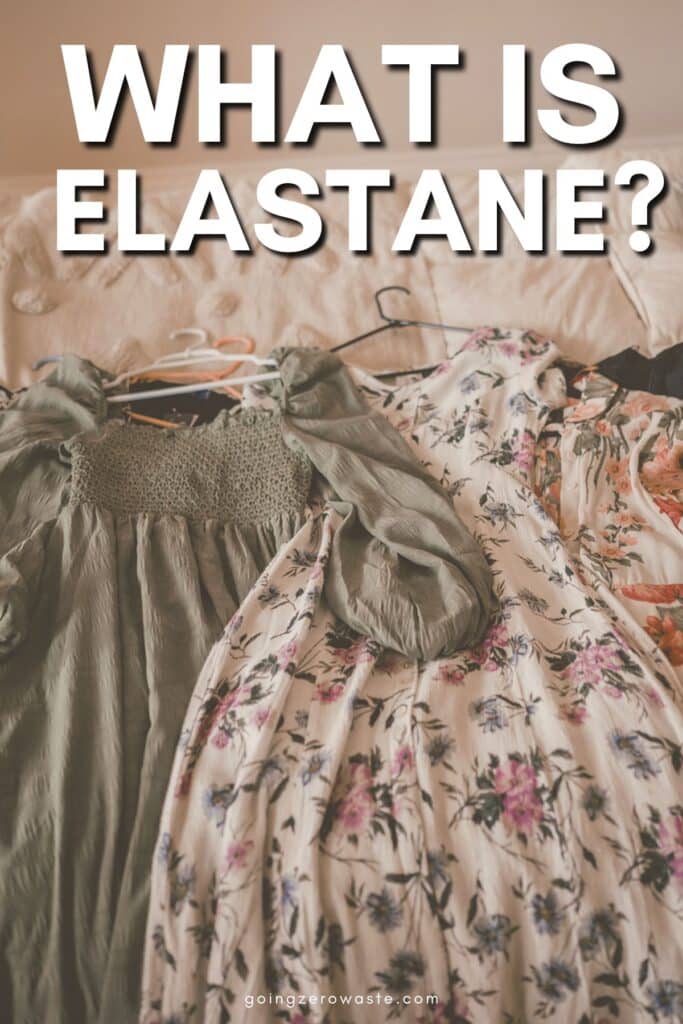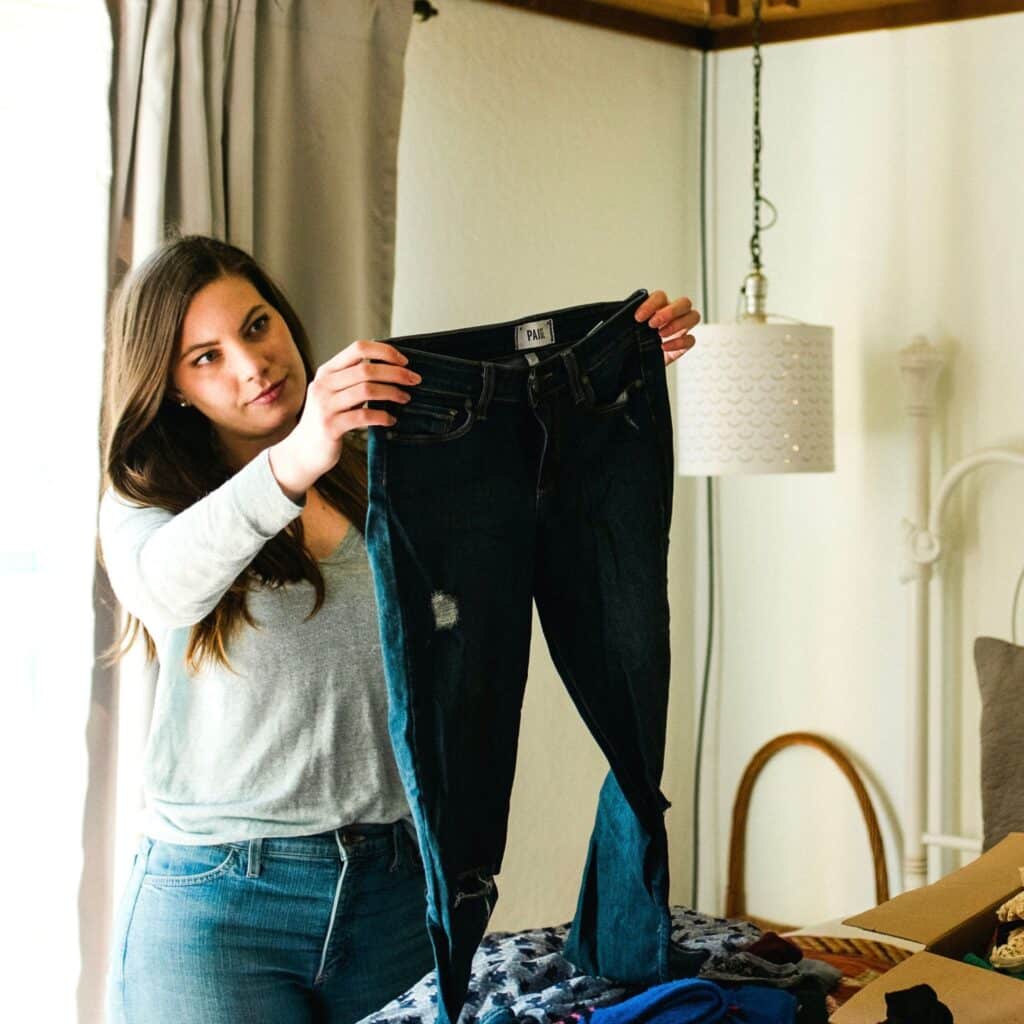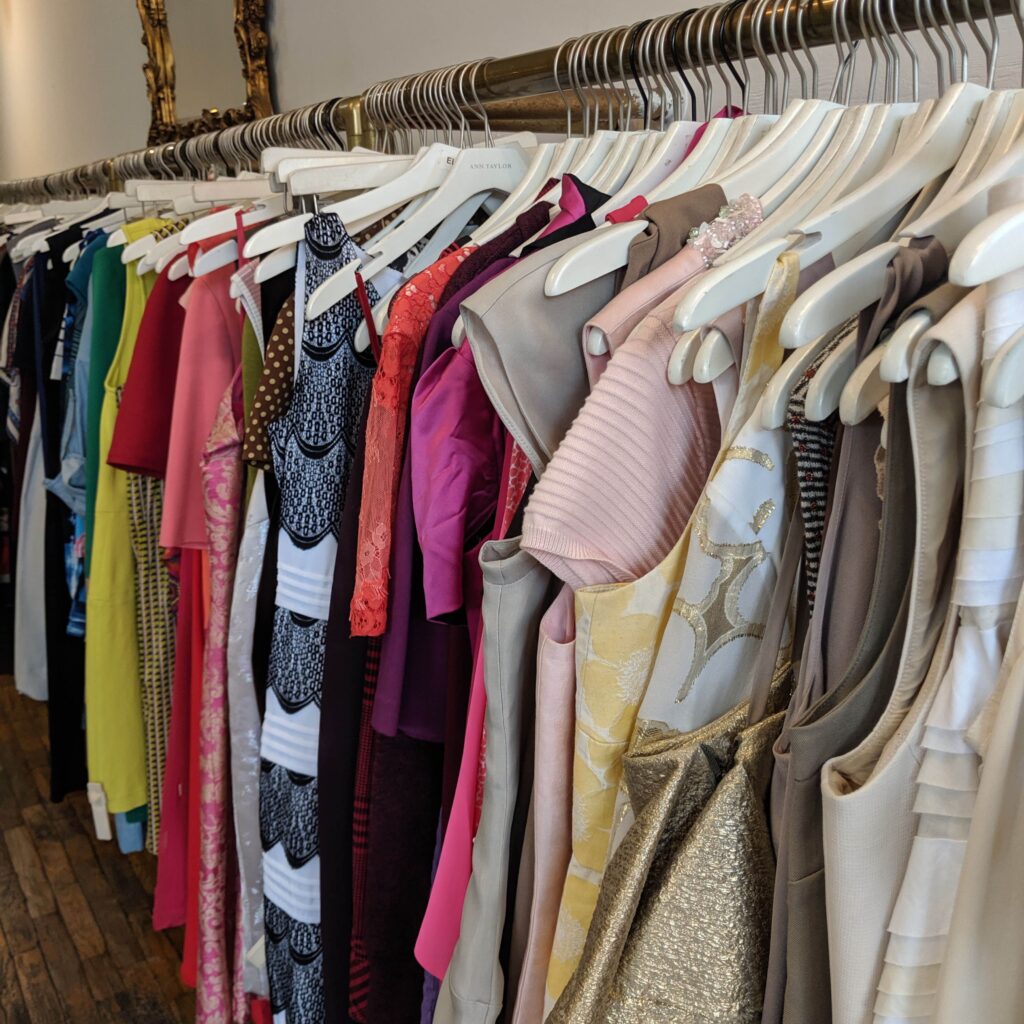Remaining Updated on April 23, 2024
Do you be taught the tags in your garments? It’s an excellent suggestion to get into the habits of it: Doing this can let you understand what provides your garments is produced from, and the place it was made.
This points, considering most of our garments is produced from polyester, aka a sort of plastic. Polyester is produced from non-renewable petroleum (crude oil) that’s extracted from the earth unsustainably.


A number of of the hyperlinks underneath is also affiliate hyperlinks. For further data please see my disclosure protection.
To create polyester, 70 million barrels of oil are used yearly, and turning this oil into polyester materials releases a complete lot of poisons into the setting.
Nonetheless, even ought to you choose further pure provides, like pure cotton, chances are it’s in no way merely 100% cotton. Counting on what garments merchandise it is, there’s an excellent probability it’s combined with one different materials, like elastane.
As an illustration, do you have to’re going to buy a nice pair of pure cotton leggings, there’s a extreme likelihood a small proportion of those leggings might even be made up of elastane.
It is as a result of elastane is often utilized in combination with completely different provides to create stretchy garments.
Nevertheless what’s Elastane? And is it sustainable? Proper right here’s all of the items that you should know regarding elastane and do you have to must seek for this supplies or avoid it in your subsequent purchase.


is elastane artificial or pure?
Elastane is a synthetic supplies that has qualities like that of rubber and is produced from polymers, significantly polyurethane. This could be a kind of plastic and was invented to change rubber throughout the Fifties. Rubber was significantly laborious to come back again by, and was subject to fluctuating prices, whereas elastane was cheaper to make.
As a result of this, elastane does not biodegrade. That moreover means it is not compostable.
Moreover of remember, elastane goes by a lot of names: Inside the US and Cananda, it goes by the mannequin determine Spandex. You may also see it labeled Lycra.
how is elastane made?
1. First, manufacturing of a prepolymer is required. That’s accomplished by mixing macroglycol with a diisocyanate monomer inside a specific sort of response vessel.
2. Then when the dry spinning method is used, the prepolymer is reacted with diamine acid.
3. Subsequent the reply is diluted with a solvent to make it thinner, which thusly makes it less complicated to take care of. It’s positioned inside a fiber manufacturing cell.
4. The cell spins to provide fibers and treatment the elastane. Inside this cell, the reply is pushed by the use of a spinneret.
5. The fibers are then heated inside a nitrogen and solvent gas decision. This transforms the liquid polymer into sturdy strands.
6. These strands are then bundled collectively as they exit the cylindrical spinning cell using a compressed air system.
7. To take care of the elastane with a ending agent, magesium stearate or one different polymer is used. This prevents the fibers from adhering collectively.
8. Remaining nonetheless not least, the remaining fibers are spooled after which capable of be dyed or woven into materials.


is elastane an excellent materials?
Elastane is an environment friendly materials by the use of its use to make garments stretchy and form-fitting. It’s sometimes current in activewear equal to yoga pants, leggings, and sports activities actions bras, alongside one other kind of garment which can be used for bodily train.
Elastane is kind of in no way utilized by itself, nonetheless typically blended with completely different supplies, like cotton. This supplies is proof in opposition to physique oils, perspiration and daylight, which makes it sturdy.
Nonetheless, by the use of the setting, elastane isn’t most likely probably the most sustainable supplies in the marketplace. Elastane is produced from plastic, which is derived from crude oil, a fossil gasoline contributing to native climate change.
Manufacturing elastane is energy-intensive and requires the utilization of various toxic chemical compounds. If these chemical compounds are normally not disposed of appropriately, they could harm the setting.
Synthetic dyes are typically utilized in elastane manufacturing, and these are recognized to pollute the setting as properly. These dyes affect not solely aquatic crops and animalsnonetheless the water present individuals rely on.
Furthermore, as talked about above, elastane is not biodegradable, nor compostable. On the end of its life, it might’t return to the earth like a pure materials may, on account of it is synthetic.
It’s worth noting that synthetic supplies are more likely to shed over time, which produces microplastics.
Currently, a model new analysis found we might presumably be ingesting 11,000 microplastics per 12 months. Microplastics have been current in our lungs, feces, and even our placentas.
It’s unknown what the nicely being outcomes of this are however, nonetheless polyurethane, elastane’s precursor, is a recognized carcinogen.
The good news is that solely a small proportion of elastane is normally utilized in garments manufacturing. So, for example, most leggings will most likely be largely cotton and perhaps 2-7% elastane.
The proper decision is to limit the amount of garments you possibly can have that includes elastane. Reserve it to your train models, if doable. And go for garments that has a smaller proportion of elastane in them ought to you possibly can.


what is the distinction between polyester and elastane?
The precept distinction between polyester and elastane is that elastane is used in order so as to add stretch to a garment. Polyester supplies are practically in no way stretchable, till the garment has added elastane in it.
That said, every polyester and elastane are synthetic provides not current in nature. They’re petroleum-based supplies.
what is the disadvantage with elastane?
The problem with elastane is every its manufacturing course of and end of life: They’ve a giant carbon footprint. The material cannot biodegrade and is manufactured unsustainably, using energy-intensive practices and harsh chemical compounds.
Because of these garments objects cannot biodegrade, they could most likely end up in a landfill someplace, contributing to air air pollution for years to come back again.
There’s moreover the issue it would shed microplastics over time with every use and wash. The nicely being impacts of this are nonetheless however to be determined.
Sadly, many garments producers use this supplies, along with sustainable ones, so it’s laborious or virtually unattainable to avoid, significantly in athleisure.
Listed below are some choices:
- Reserve elastane for train clothes solely
- Use what you already have, as a substitute of buying new
- In the event you occur to should buy new clothes that embody elastane, choose from sustainable producers
- Seek for smaller percentages of elastane used throughout the product make-up, if doable


sustainable producers that use elastane
Certain, even sustainable producers use elastane. Nonetheless, chances are you’ll offset elastane’s environmental impacts by choosing to buy from producers that blend elastane with further sustainable provides, equal to pure cotton.
As an illustration, shopping for a pair of pure cotton leggings that embody elastane is more healthy than ones containing normal cotton. Normal cotton is a water-intensive crop and carefully sprayed with pesticides.
Whereas every leggings will most likely take advantage of elastane throughout the provides, one has significantly a lot much less of a carbon footprint.
To not level out the mannequin you’re purchasing for it from points too: Some producers in the reduction of their normal have an effect on in several strategies, like prioritizing plastic-free packaging, or donating to environmental non-profits.
You’ll moreover want to pick out clothes constructed to ultimate a while, since elastane does not biodegrade. In the event you occur to’re contemplating of buying one factor with elastane in it (like leggings), be sure you’ll use them for years to come back again.
Listed below are some eco-friendly garments producers that use elastane in a number of of their garments. All of these producers try to chop again their environmental footprint by the use of using pure provides, low waste packaging, and attaining eco certifications.
I’ve gone ahead and highlighted a number of of my favorite choices of each mannequin, nonetheless it isn’t an exhaustive itemizing. Be certain to try their internet sites for further data.


1. pure fundamentals
- Garments fundamentals for ladies and men
- Created from pure cotton, Tencel, recycled nylon and LENZING ECOVERO
- Manufactured in trusted, licensed factories the place workers are paid a residing wage + in a safe working space
- 1% For The Planet member
- B Firm


2. pact
- Garments fundamentals, underwear and socks for every males, girls, kids, and infants
- Created from pure cotton which makes use of as a lot as 95% a lot much less water than normal cotton, and doesn’t embody the merciless chemical compounds, bleaches or dyes that normal cotton makes use of
- Manufactured in sincere commerce licensed factories which may be sweatshop and child-labor-free
- Recyclable paper baggage for packaging merchandise


3. tentree
- Relaxed garments for males, girls, and kids along with every garments and niknaks
- Makes use of recycled poly, pure cotton, hemp, cork and completely different sustainable provides
- Manufacturing companions have ethical labor rights + safe workplaces
- Plant 10 timber for every purchase


4. girlfriend collective
- Fundamentals and activewear for ladies
- Created from recycled provides like post-consumer water bottles
- Manufactured in factories which may be SA8000 and WRAP licensed which ensures workers are paid a residing wage + have safe working conditions
- Garment recycling program “ReGirlfriend”
- Packaging is 100% recycled and recyclable


5. toad and co
- Ladies and men’s garments for frequently and outside use
- Makes use of pure cotton, hemp, Tencel and recycled provides
- Takeback program for earlier clothes (from any mannequin)
- Member of The Renewal Workshop, repairs and resells earlier Toad clothes
- LimeLoop companion, reusable supply—produced from recycled billboards
What do you take into account this supplies? Will you be purchasing for it, or avoiding it? Let me know throughout the suggestions!
